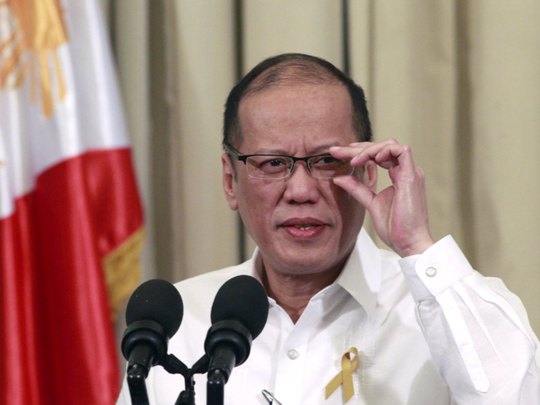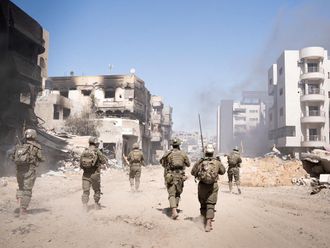
For a leader facing a plethora of challenges at home, Philippines President Benigno Aquino is thinking a lot about Detroit — in particular, how to steal the title ‘Detroit of Asia’ away from his Southeast Asian neighbour Thailand.
Aquino’s Philippines is riding an economic high; he claims GDP growth this year could reach 8 per cent, which would be the best performance since the 1950s. The economy enjoyed a 66 per cent surge in foreign direct investment in 2014 compared to a year earlier. On Thursday, the central bank was confident enough in growth prospects to hold rates steady, unlike most other Asian countries recently.
The great need, however, remains job growth strong enough to keep pace with the country’s swelling population. The Philippines’ 6.6 per cent jobless rate is six times higher than Thailand’s and 1.6 times more than China’s. That’s why Aquino, 55, is hoping to spend his last 15 months in office trying to transform his nation into a true manufacturing centre. One major initiative is the so-called Comprehensive Automotive Resurgence Strategy programme, or Cars, which aims to woo General Motors, Toyota and other auto giants to set up shop in the Philippines. It entails tax incentives and about $600 million (Dh2.20 billion) worth of benefits for companies willing to produce at least 40,000 vehicles annually, each fully built in the Philippines.
Immense challenges
“We’re not relying on trickle-down,” Aquino told me in an interview on Wednesday at the presidential palace in Manila. “We are really trying to enable our people to seize every opportunity that comes their way.”
Call and data centres have created hundreds of thousands of good-paying jobs in the Philippines. But that’s the domain of educated urban workers, not the tens of millions of rural poor; manufacturing would soak up more workers at home and hopefully draw back some of those currently working abroad. While the $24 billion Filipinos wired home last year helps Manila’s finances, migration depletes the quality of the local labour pool and hurts productivity.
“At the moment, we are a two-shop economy — business-process outsourcing and remittances,” says Nestor Tan, president of BDO Unibank, the nation’s biggest money manager. “More manufacturing would diversify the economy in so many ways.”
The challenges, however, are immense. Carmakers aren’t going to show up until the Philippines improves its ports, roads, airports and its notoriously expensive and unreliable power supplies. Clearing logjams to infrastructure projects will be hard; paying for them will be harder. Last month, Aquino greenlighted six transportation-related projects totalling about $8.4 billion; those costs will grow exponentially. As great as the record $6.2 billion of FDI last year sounds, it’s still half what Thailand has been getting in recent years.
Anti-graft push
Pulling in more cash requires better governance. Investors will demand more progress in reducing corruption and inefficiency before deploying fresh capital. Equally important, Aquino’s anti-graft push must outlive his six-year term, which ends in June 2016. That means he’s going to have to start putting more public services and transactions online, including bidding for government contracts. He should go further to do lifestyle checks on lawmakers living far beyond their means. He also should do more to clamp down on the infamous Bureau of Customs, where tens of billions of dollars have vanished since 1990.
Still, Aquino’s not wrong to see an opportunity here. Given Japan’s ageing population and the central bank’s failure to end deflation, Toyota is looking abroad and expanding its strategy of producing cars where they’re purchased. (The world’s largest automaker may soon formalise a $1 billion investment in a new assembly plant in Mexico.) Its traditional Southeast Asian base — Thailand — is looking less and less attractive as the ruling junta juggles a vague and shifting list of economic priorities. Thailand’s central bank recently downgraded the economy’s prospects this year, saying business and consumer confidence had been shaken by the weaker-than-expected recovery.
With its young, English-speaking population, low labour costs and rising household incomes, the Philippines looks good by comparison.
The biggest change in the Asian manufacturing space is choice — automakers suddenly have many options as India, Indonesia and the Philippines vie for their factories. At first, the Philippines is trying to find “a niche for the region” and position itself as “a mass producer of a model that is not produced in Thailand,” before building on those gains, says Trade Secretary Gregory Domingo.
In the interview, Aquino called signs that Japan’s Mitsubishi may be upping production in the Philippines “very, very significant.”
Success would cement Aquino’s legacy more strongly than anything else he might do in his remaining months, spreading the benefits of growth beyond skyscraper-strewn major cities. “We are very conscious that manufacturing is more stable than services,” Aquino told me. This is one opportunity his country can’t afford to miss.
— Washington Post
William Pesek, a Bloomberg View columnist based in Tokyo, writes on economics, markets and politics in the Asia-Pacific region.









